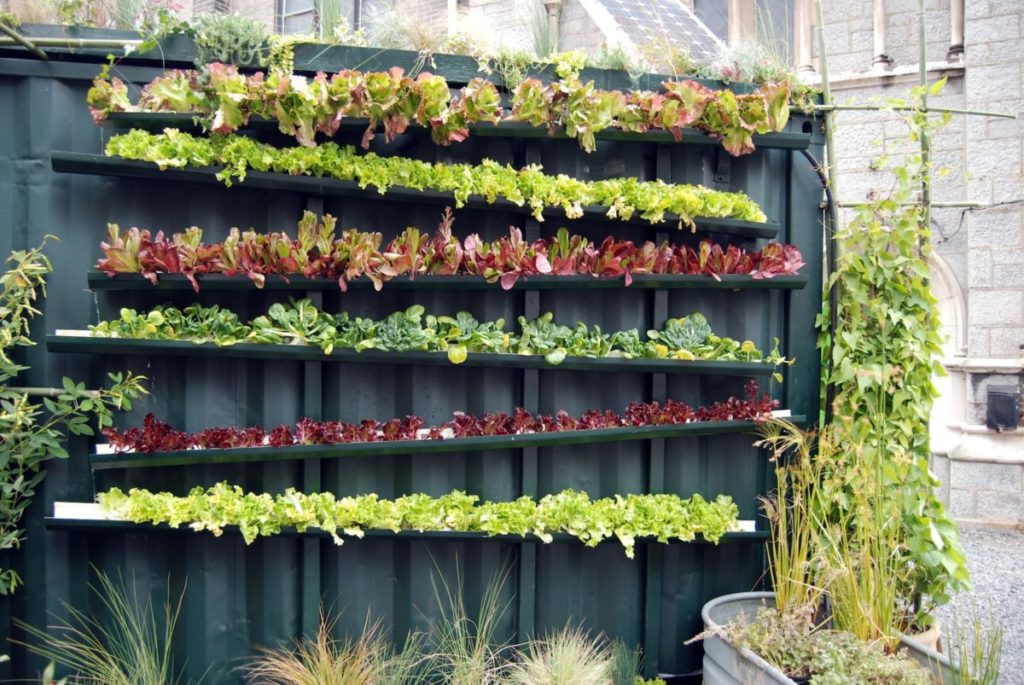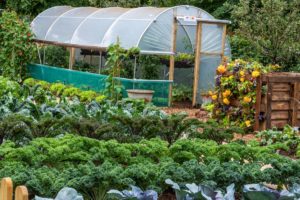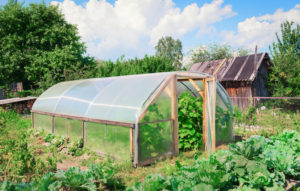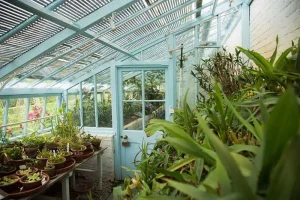If you live in a small apartment or have limited outdoor space, you don’t have to sacrifice your love for gardening.
With the right techniques and tools, you can grow beautiful and healthy plants vertically in tight spaces, creating a lush oasis that will brighten up your day and purify your air.
We’ll explore the world of vertical gardening, providing actionable tips and inspiration to help you create your own vertical garden, no matter how limited your space may be.
Choose the right plants
Select plants that are compact or trailing in nature, such as succulents, herbs, and lettuce. These plants will grow well in tight spaces and won’t outgrow their designated area.
These plants are designed to thrive in tight spaces and won’t outgrow their designated area, making them perfect for small urban gardens.
Succulents, herbs, and lettuce are all excellent choices for small spaces.
Succulents such as aloe and cacti are drought-tolerant and can survive with minimal watering, making them ideal for busy urban gardeners.
Herbs like basil and mint are not only easy to grow, but they also add flavor to a variety of dishes.
And lettuce, a cool-season crop, can be grown year-round in a pot, providing a constant source of fresh leaves.
With proper care and attention, these compact and trailing plants will thrive in even the tiniest of spaces, bringing a touch of greenery and beauty to your urban oasis.
Use a trellis or obelisk
Train your plants to grow up a trellis or obelisk, which will make the most of your space. You can also use a simple string or wire lattice for support.
To make the most of your space and add a touch of greenery to your home, consider training your plants to grow up a trellis or obelisk.
These support systems allow your plants to reach greater heights and fill out more efficiently, creating a lush and vibrant display.
Choose from a variety of trellis styles, such as traditional wooden or metal obelisks, or try a more modern take with a string or wire lattice.
Whichever you choose, your plants will thrive with the extra support, and you’ll enjoy a beautiful display that adds warmth and life to any room.
Plus, training your plants to grow up a trellis or obelisk is a simple and space-saving way to add more plants to your home.
With just a few easy steps, you can elevate your plants and enhance your living space.
Utilize walls and ceilings
Don’t just focus on the floor! Make use of your walls and ceilings by attaching planters or using wall-mounted trellises to grow plants upward.
Instead of limiting yourself to the floor, consider utilizing your walls and ceilings to create a vertically integrated gardening system.
By attaching planters or using wall-mounted trellises, you can grow plants upward and maximize your space.
This not only adds visual interest to your home but also provides a functional solution for urban gardening.
For instance, you can install wall-mounted planters made of durable materials like wood or plastic to house your favorite herbs or succulents.
These planters can be placed strategically near windows or skylights to provide adequate lighting for your plants.
You can also consider using wall-mounted trellises to support climbing plants like peas, beans, or cucumbers.
You can explore the use of ceiling-mounted planters or green walls to bring the garden upward.
Green walls, also known as living walls, are covered with lush foliage and can be hung like a picture on your ceiling.
Ceiling-mounted planters offer another option for displaying your plants in an innovative way.
By incorporating these vertical gardening methods, you can turn your home into a functional and aesthetically pleasing oasis.
Remember to choose the right plants for your space and ensure proper care and maintenance to ensure the health and longevity of your urban garden.
With a little creativity and some know-how, you can create a thriving garden that elevates your home and your spirit.
Stack containers
Stacking planters or using vertically stacked shelves can help you grow more plants in a smaller space. Just be sure to use a sturdy structure to support the weight of the plants.
Stacking planters or using vertically stacked shelves is an innovative solution to maximize your gardening space, especially for those with limited outdoor area.
By layering planters or shelves, you can grow more plants in a smaller footprint, creating a compact and efficient gardening system.
To ensure the stability and support of the structure, use sturdy materials such as wood or metal, and make sure the stacking system is well-balanced to prevent any potential collapses.
Consider the size and weight of the planters or shelves when selecting the materials to ensure that the structure can support the total weight.
With a little creativity and some careful planning, you can enjoy a productive and space-saving gardening experience.
Use hanging planters
Hanging planters can be a great option for vertical gardening in tight spaces. You can hang them from the ceiling or place them on walls, and they can add a touch of greenery to any room.
Hanging planters are an excellent choice for those looking to bring some greenery into their homes or offices, even when space is at a premium.
These planters can be suspended from the ceiling or affixed to walls, allowing you to create a thriving vertical garden in even the tightest of spaces.
The versatility of hanging planters means they can be placed in a variety of locations, such as near windows, in corners, or even along entire walls.
They can add a touch of natural beauty and serenity to any room, helping to purify the air and create a calming atmosphere.
Plus, with proper care, hanging planters can provide a bountiful harvest of fresh fruits, vegetables, or herbs, all while taking up minimal space.
Whether you’re looking to bring some greenery into your home, office, or restaurant, hanging planters are a fantastic option for vertical gardening.
Incorporate pockets
Use pocket planters or small container gardens to grow plants in tight spaces. These planters can be placed on shelves or hanging from the ceiling, and they can be easily accessed for watering and maintenance.
Growing plants in small spaces can be a challenge, but pocket planters and container gardens offer a solution.
These planters are designed to hold a small amount of soil and can be placed in tight spaces such as shelves or hanging from the ceiling.
They come in a variety of shapes, sizes, and materials, so you can choose the one that best fits your needs and preferences.
One of the biggest benefits of using pocket planters is that they can be easily accessed for watering and maintenance, even in cramped spaces.
For example, you can place a pocket planter on a shelf in your kitchen or bathroom, and simply reach over to water it whenever you need to.
Pocket planters are great for growing herbs, succulents, and other plants that don’t require a lot of space or care.
By using pocket planters and container gardens, you can bring a touch of greenery into even the smallest of spaces, and enjoy the benefits of gardening without the hassle.
Make use of corner spaces
Don’t overlook corner spaces! You can use corner planters or shelves to create a vertical garden in a space that would otherwise be underutilized.
Don’t overlook corner spaces!
These often-neglected areas can be transformed into thriving vertical gardens, maximizing your space and adding a touch of greenery to your home.
Use corner planters or shelves to create a vertical garden that not only adds beauty but also helps purify the air and improve indoor air quality.
Choose plants that thrive in low-light conditions, such as pothos, snake plant, or ZZ plant, which are perfect for corners with limited sunlight.
Consider using a self-watering planter or a drip irrigation system to ensure your plants receive the right amount of moisture, even when you’re away.
With a little creativity and planning, you can turn an underutilized corner into a lush oasis that brings joy and well-being to your home.
Be creative
Think outside the box and get creative with your vertical gardening! Use old furniture, ladder, or other unconventional objects to create a unique and functional vertical garden in tight spaces.
Don’t let limited space stifle your green thumb!
Think outside the box and get creative with your vertical gardening.
Rather than confining your plants to a traditional garden bed, consider using old furniture, ladder, or other unconventional objects to create a unique and functional vertical garden in tight spaces.
For instance, upcycle an antique ladder into a garden trellis by attaching planters and twine to the rungs.
Or, repurpose a vintage dresser as a vertical garden by drilling holes in the drawers for potting soil and planting a variety of succulents and herbs.
Not only will this unconventional approach add visual interest to your space, but it will also optimize your available space and bring the beauty of nature indoors.
So don’t be afraid to think outside the box and get creative with your vertical gardening – the possibilities are endless!
Want More? Dive Deeper Here!
Hey there! If you’re the type who loves going down the rabbit hole of information (like we do), you’re in the right spot. We’ve pulled together some cool reads and resources that dive a bit deeper into the stuff we chat about on our site. Whether you’re just killing time or super into the topic, these picks might just be what you’re looking for. Happy reading!
- Grow more in less space with vertical gardening | Oklahoma State University
- Gardening in Small Spaces
- Pocket Gardening for Small Spaces | Gardening in Orange County New York
- Vertical Gardening Using Trellises, Stakes, and Cages | VCE Publications | Virginia Tech
- Gardening in small spaces | UMN Extension






